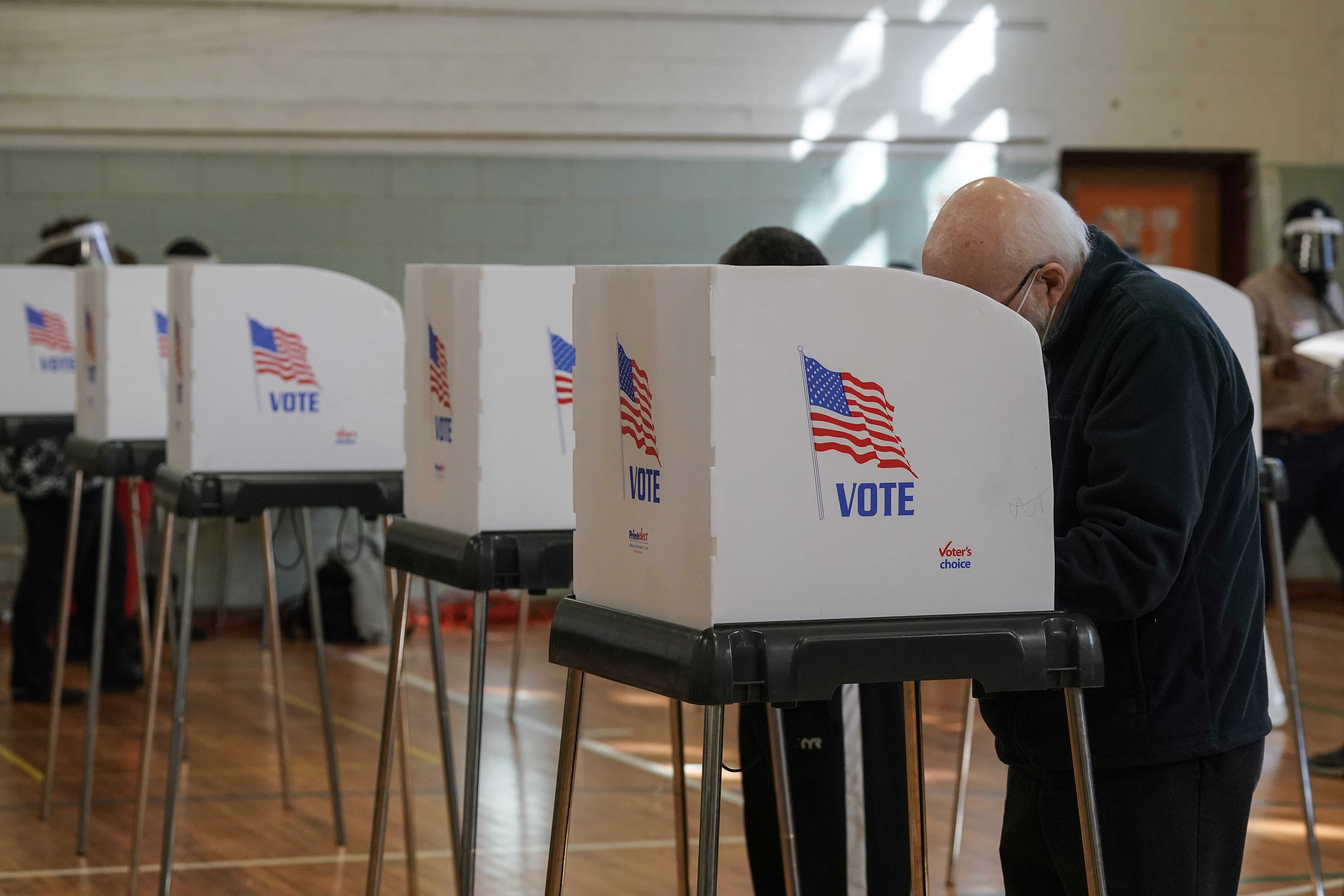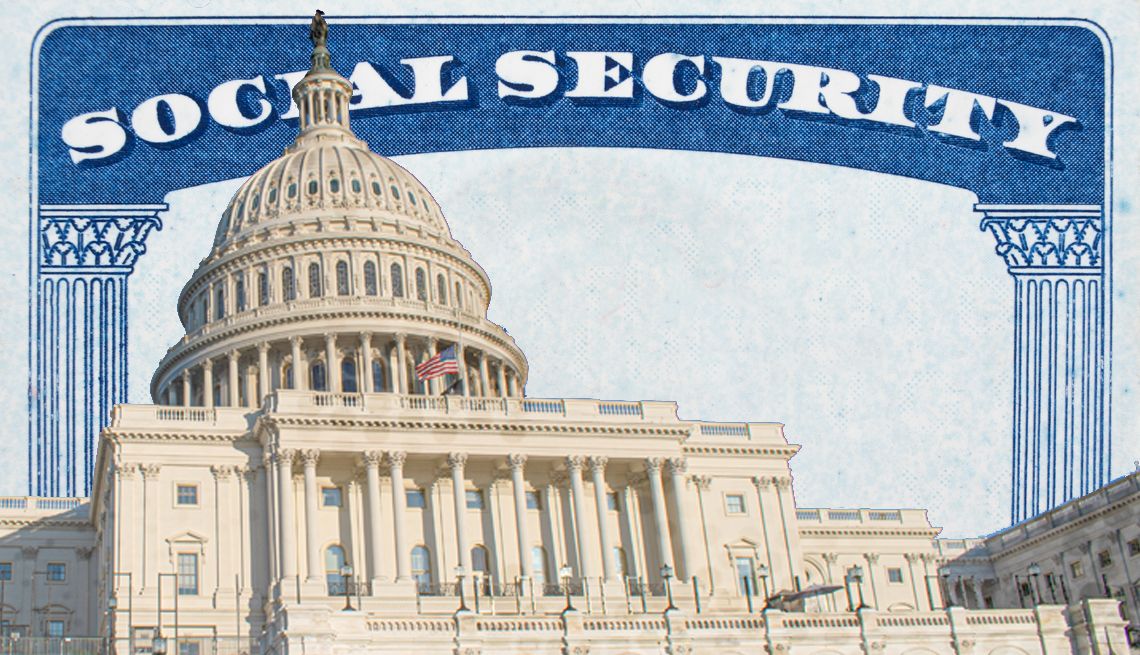AARP Eye Center
How to Vote in Maryland’s 2024 Elections
Important dates and election information

Last day to request a mail-in ballot: Tuesday, Oct. 29 (mail or fax); Friday, Nov. 1 (online); Tuesday, Nov. 5 (in person)
Deadline to return a mail-in ballot: Tuesday, Nov. 5 (drop box or in-person); Friday, Nov. 15 (received by mail, must be postmarked by Nov. 5)
Last day of early in-person voting: Thursday, Oct. 31
Election Day: Tuesday, Nov. 5
Voting at a glance
- Voter registration: The deadline to register in advance for the Tuesday, Nov. 5, general election is Tuesday, Oct. 15, though you may also register during the early voting period or on Election Day. Visit the voter information portal to check your status.
- Mail-in voting: Registered voters can request a mail-in ballot.
- Early in-person voting: Early voting runs from Thursday, Oct. 24, through Thursday, Oct. 31. Find your early voting center on the state board of elections website.
- Voting at the polls: Polls are open from 7 a.m. to 8 p.m. Find your assigned polling place using the board of elections’ online tool.
Recent voting changes in Maryland
New laws may change how you vote in the 2024 elections:
- Election officials must begin sending out mail-in ballots at least 43 days before an election to voters who request one. For this year’s general election, election officials will start distributing mail-in ballots by Monday, Sept. 23.
- Redistricting in 2022 redrew the boundaries of certain state legislative and U.S. congressional districts. Check your district to see if anything has changed.
How to register to vote
Register online, by mail or in person:
- Online: Use the state’s voter registration portal to register or update your registration. You’ll need a valid Maryland driver’s license, learner's permit, or state-issued ID, or the last four digits of your Social Security number.
- By mail: Print a voter registration form, complete it and mail it to your local board of elections. Or call your local board or the state board of elections to request an application. You’ll need a Maryland driver’s license, learner's permit, or state-issued ID, or the last four digits of your Social Security number.
- In person: Go to your local board of elections, the state board of elections or any Maryland Motor Vehicle Administration office. You can also register at an Area Agency on Aging office or at several other locations listed on the state board of elections website. You must provide a Maryland driver’s license, learner's permit, or state-issued ID, or the last four digits of your Social Security number, or declare, under penalty of perjury, that you don’t have any of those IDs.
The deadline to register in advance for the Tuesday, Nov. 5, general election is Tuesday, Oct. 15. If you don’t receive a Voter Notification Card three weeks after you submit an application, contact your local board of elections. Check your registration status through the state’s Voter Lookup portal.

Registering to vote during early voting and on Election Day
If you miss the deadline to register in advance, you can register at an early voting center in your county or at your polling place on Election Day. Bring a Maryland driver’s license, learner's permit, or state ID card, paycheck, bank statement or other government document that confirms your name and address.
How to request a mail-in ballot
Any registered voter can request a mail-in ballot:
- Online: Use the state’s voter services portal to complete an application. You must have a Maryland driver’s license or state-issued ID.
- By mail, email or fax: Download, print and complete a ballot application, then mail, email (as an attachment) or fax it to your local board of elections.
- In person: Visit your local board of elections to pick up an application. If ballots are available at that time, you can take one with you. In-person requests can be made up until close of business on Election Day.
Due to a recent change in the law, officials now mail every voter an application for a mail-in ballot. You may request a one-time ballot or choose to be on the permanent mail-in ballot list and receive mail-in ballots for every election in which you’re eligible to vote.
You also have the choice to receive your ballot by mail, fax, or internet. The deadline to request a mailed or faxed mail-in ballot is Tuesday, Oct. 29. If you want your ballot delivered to you via internet, request it by Friday, Nov. 1. You may also request one in person on Tuesday, Nov. 5.
If needed, you can designate someone else to deliver your ballot application, retrieve your ballot and bring it to you. You and the person you choose must complete a mail-in ballot designation of agent form and take it to your local board of elections.
Returning a mail-in ballot
Return completed ballots by mail or in person, including those received by email and fax.
- By mail: Send your completed ballot to your local board of elections. Your ballot must be postmarked by Tuesday, Nov. 5, and received by 10 a.m. on Friday, Nov. 15.
- In person: Drop off your completed ballot at your local board of elections, polling place, or in a drop box by 8 p.m. on Election Day, Tuesday, Nov. 5. You may also take your ballot to an early voting center by Thursday, Oct. 31. Check the state board of elections website for a list of drop box and early voting center locations.
Use the state’s voter services portal to track the status of your ballot.
Voting in person before Election Day
Early in-person voting starts Thursday, Oct. 24, and runs through Thursday, Oct. 31, at an early voting center in your county. Polling hours are 7 a.m. to 8 p.m. Find your early voting location on the state board of elections website.
Voting at the polls on Election Day
Polls are open from 7 a.m. to 8 p.m. Find your assigned polling place using the board of elections’ online tool. If you received a mail-in ballot but want to vote on Election Day, you’ll be asked to cast a provisional ballot. Your ballot will be counted once election officials confirm you haven’t already voted. Sample ballots will be available through the state board of elections’ online Voter Lookup Tool.
Voter ID requirements on Election Day
First-time voters will be asked to show ID before voting if ID requirements weren’t met when registering. Acceptable forms of ID include a current Maryland driver's license, a U.S. passport or a recent utility bill with your name and current address. Find the full list of acceptable forms of ID on the board of elections website.
If you can’t provide ID, you’ll be issued a provisional ballot. For your ballot to count, you must provide an approved ID to your local board of elections by 10 a.m. on Wednesday, Nov. 13.
Voting with a disability
Each polling place is equipped with an accessible system for voters with disabilities. Voters who need assistance filling in their ballot can receive help from either two election judges or a person of their choice, as long as that person is not an employer, union agent or officer, or a challenger or watcher. The person assisting must sign a Voter Assistance Form.
Voters also have the option of voting by mail-in ballot. If you cannot mark your ballot independently, an accessible online ballot-marking tool is available. If you would like to use this online tool, request a mail-in ballot and check the box with the option, "email a link to print my ballot." If using this tool, you’ll make your choices on a computer, print your ballot and return it to your local election office by mail, ballot drop box or in person.
Find more information at the state board of elections website.
Voting from a nursing home or long-term care facility
Local board of elections officials can coordinate with facility administrators to assist residents of nursing homes and long-term care facilities with both registering to vote and voting absentee.
Editor’s note: This guide was originally published on Jan. 30, 2024. It has been updated with new information about 2024 elections.
Michelle Tuccitto Sullo is a contributing writer covering state and federal policy. She previously served as managing editor of the Hartford Business Journal in Connecticut and has worked for the New Haven Register, Connecticut Law Tribune and New Haven Biz.
Grace Dickinson contributed to this report.
















)


















.jpg?crop=true&anchor=13,195&q=80&color=ffffffff&u=lywnjt&w=2008&h=1154)





























